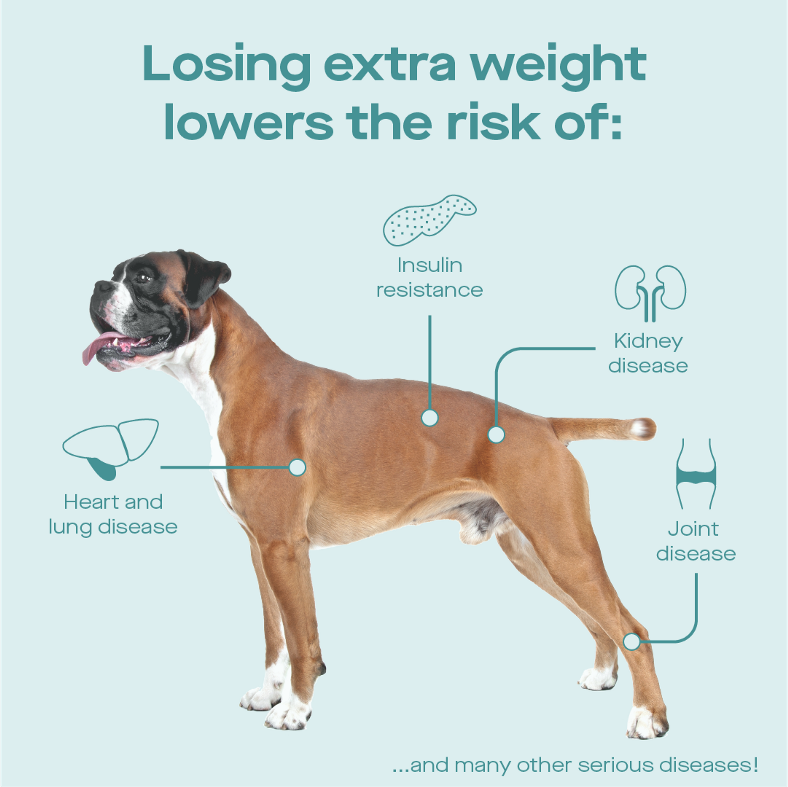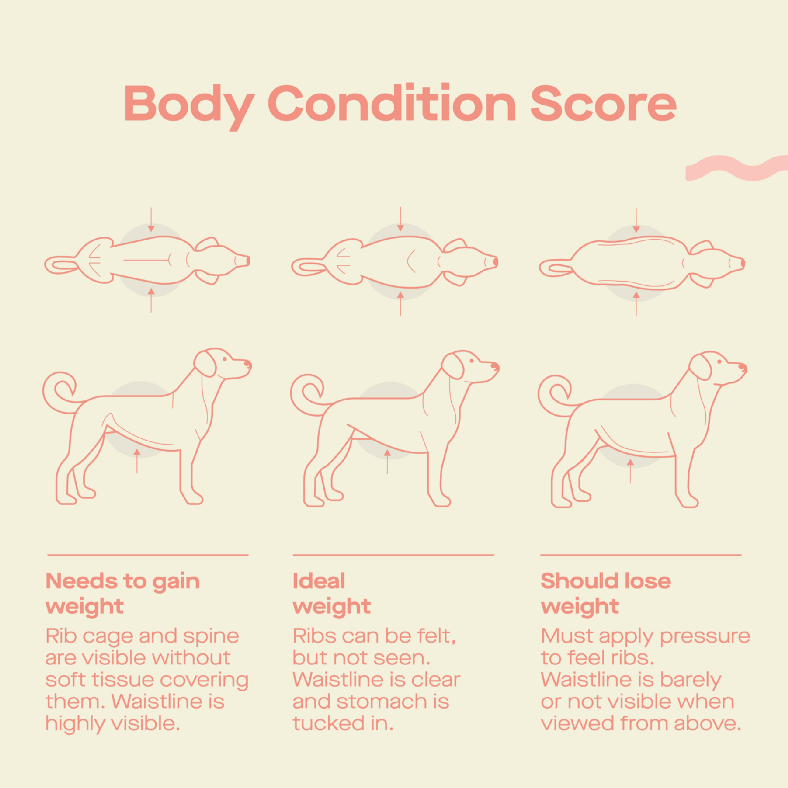Our pets depend on us for everything, and their health and well-being are in our hands. We all love our best friends, but excess body fat is a major risk factor for various dog diseases.
Even the most dedicated pet parents can struggle to help their dogs maintain a healthy weight. According to recent studies, more than half of dogs in the United States weigh more than their ideal weight.
The challenge starts with determining your dog’s ideal weight, weighing it regularly, and choosing between numerous pet food brands – all promising the best diet.
In addition, the exact relationship between nutrition, weight, and health is complex, and scientists are still trying to figure it out. But over the past two decades, it’s become clear that gut bacteria play a vital role in this relationship.
Gut bacteria are at the heart of a dog’s metabolism, a process in which their bodies convert what they eat into energy and absorb molecules that are essential for bodily function. The importance of these bacteria means that sometimes losing weight is more than just burning more calories than eating.
One study examining the relationship between exercise, weight loss, and dogs’ gut microbiomes found that the composition of the gut microbiome, the collection of all the bacteria and microbes that live in the gut, may prevent overweight dogs from losing excess weight. What’s more, numerous studies have shown that low diversity of the microbiome is one of the main characteristics of obesity in humans and dogs.
The importance of gut bacteria is why Stay focuses on the dog’s microbiome. Our recipes are uniquely designed to support a healthy and diverse microbiome. With our seasonal microbiome checks, we can track how gut bacteria respond to the diet and ensure that meal plans meet your dog’s unique needs.
Wait, if my dog is chubby, why should I care?

Different breeds vary greatly in size, and each dog has its own ideal weight. In general, dogs that exceed ten percent of their ideal body weight are considered overweight, and excess fatty tissue can take a toll on the dog’s body. This adipose tissue often causes low-grade but chronic inflammation throughout the body and can lead to the development of different diseases from joint pain to heart, lung, and kidney disease.
Excess body fat shortens a dog’s lifespan and harms their health. Even a 5% to 10% weight loss can have a positive impact on the overall health of an overweight dog. Weight management and the right nutrition, tailored to each dog’s needs, can prevent many diseases before they occur – rather than trying to deal with them after they appear.
How can I tell if my dog needs to lose weight?
The best way to determine if your dog needs weight loss is to use an easy-to-use chart accepted by the Global Nutrition Committee of the World Small Animal Veterinary Association. Stay’s onboarding process relies on this chart to calculate an accurate meal plan for your dog.

Different breeds vary greatly in size, and each dog has its own ideal weight. In general, dogs that exceed ten percent of their ideal body weight are considered overweight, and excess fatty tissue can take a toll on the dog’s body. This adipose tissue often causes low-grade but chronic inflammation throughout the body and can lead to the development of a variety of diseases, from joint pain to heart, lung, and kidney disease.
Excess body fat shortens a dog’s lifespan and harms their health. Even a 5% to 10% weight loss can have a positive impact on the overall health of an overweight dog! Weight management and the right nutrition, tailored to each dog’s needs, can prevent many diseases before they occur – rather than trying to deal with them after they appear.
How can I help my dog lose weight?
Many factors affect the risk of gaining those unhealthy extra weights. Genetics are important, and some dog breeds are genetically prone to weight gain, such as Hounds, Beagles, Pomeranians, Pugs, Pekingese, Shetland Shepherds, Rottweilers, Dachshunds, and Cocker Spaniels. Age and gender are also important. Female dogs tend to gain more weight than male dogs. Weight gain can occur at any age, but is most common in dogs aged 5-11 years.
Our dogs rely on us to monitor their weight and health. Acknowledging the problem is the first step. According to recent research, pet parents who don’t consider obesity a problem are more likely to have dogs that weigh more than their ideal weight.
In addition, the importance of exercise cannot be overemphasized in terms of weight loss, and it also helps maintain the desired target weight in the long run. Of course, exercise should be gradually added to your dog’s daily routine, and you should consider your dog’s needs and health-related conditions that may be related to his current physical condition.
Treats play an important role in bonding with our pets, but most are usually fatty and high in calories that can turn treats into an extra meal. Regardless of your dog’s situation, treats should account for more than 10% of its total daily caloric intake.
Like humans, dogs lose weight faster and more pronounced at first, then become more challenging and take longer to lose excess weight. In response to changes in the body’s caloric balance, metabolism slows down and more calories are extracted for every piece of food the dog eats.
Today we know that gut bacteria changes in quantity and activity play a crucial role in these metabolic changes, as well as the so-called “rebound effect” in diet. The typical microbiota of obese dogs is very different from the gut bacteria of average-weight dogs. With a successful weight loss diet, most of the gut bacteria in dieting dogs are almost identical to those in dogs that have never been overweight.
However, recent studies have found that there are still some differences in the microbiome of previously obese dogs. These differences affect the dog’s body metabolic rate and re-encourage weight gain. In addition, the researchers were even able to predict weight gain after dieting in mice based on microbiome analysis.
How to maintain and help your dog reach its ideal weight?
Blautia is one of these beneficial bacteria. This bacterium is a permanent feature of a dog’s healthy gut. A decrease in its level indicates an imbalance in the microbiome, which is associated with intestinal diseases and obesity.
Our seasonal microbiome checks, combined with your feedback on any changes in your dog, will allow us to proactively provide any advice about your meal plan. That’s how we can improve your best friend’s gut health and let them live a happy and healthy life!

